Giochi dell'Oca e di percorso
(by Luigi Ciompi & Adrian Seville)
(by Luigi Ciompi & Adrian Seville)

|
Giochi dell'Oca e di percorso
(by Luigi Ciompi & Adrian Seville) |

|
 |

Torna alla ricerca giochi (back to game search) |
 |
| Novo Jogo da Gloria | ||
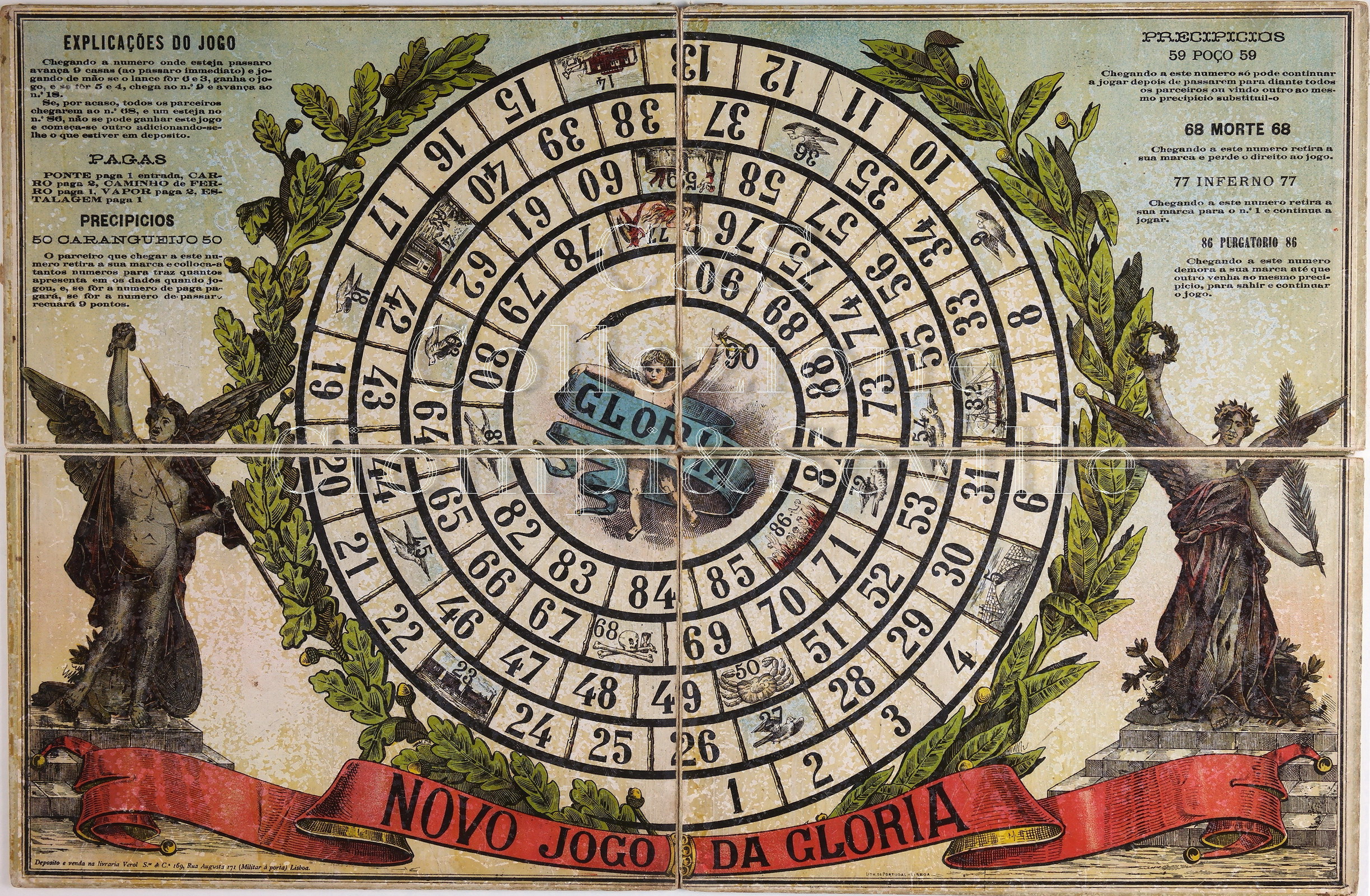 |
Versione stampabile
 |
Invia una segnalazione

|
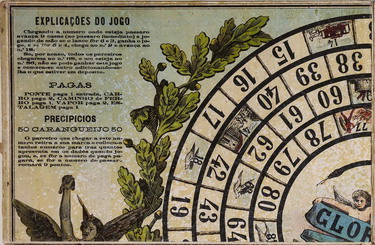 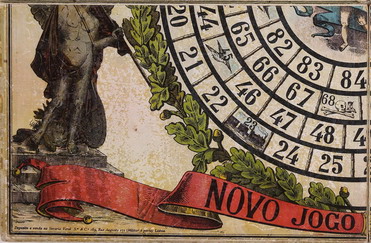 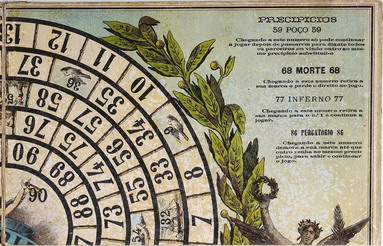 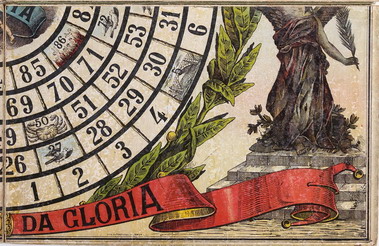 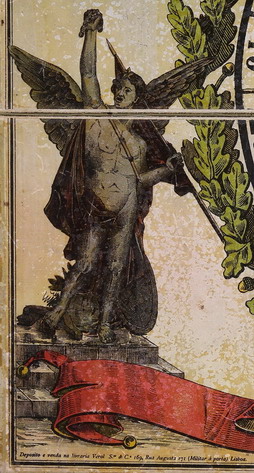 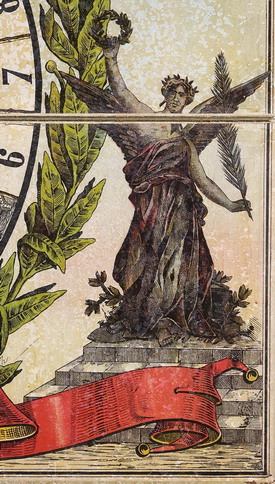 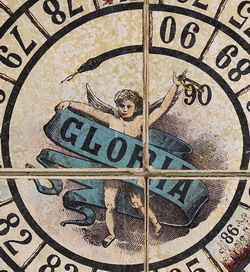 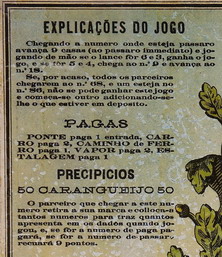 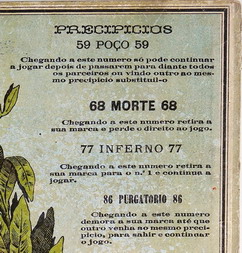 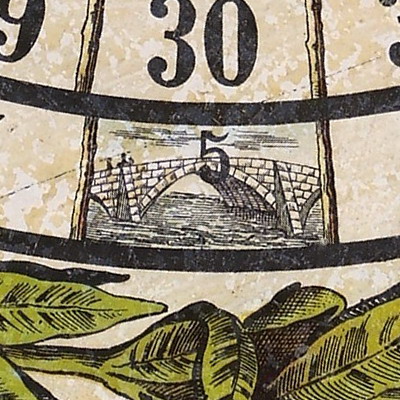 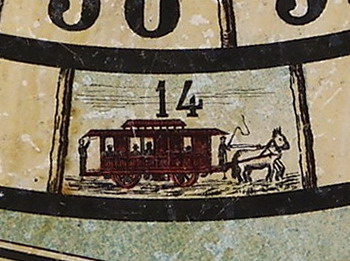 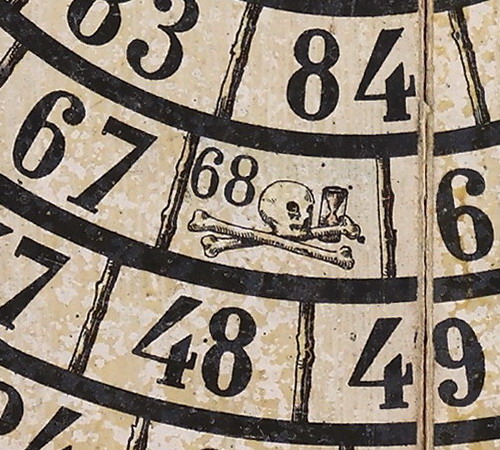 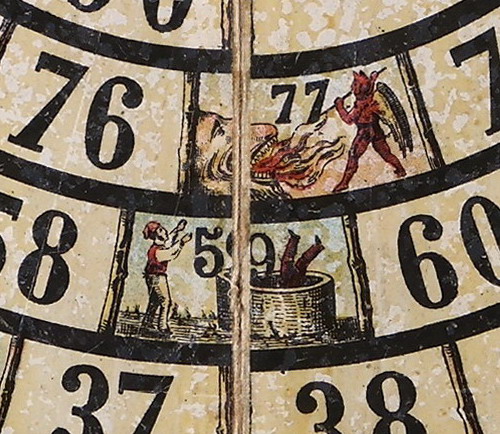 |
primo autore: | Non indicato |
| secondo autore: | Non indicato | |
| anno: | 1900ca | |
| luogo: |
Portogallo-Lisbona |
|
| periodo: | XIX secolo (3°/4) | |
| percorso: | Percorso di 90 caselle numerate | |
| materiale: | carta incollata su cartone ripiegato in 4 | |
| dimensioni: | 000X000 | |
| stampa: | Cromolitografia | |
| luogo acquisto: | ||
| data acquisto: | ||
| dimensioni confezione: | ||
| numero caselle: | 90 | |
| categoria: | Oca | |
| tipo di gioco: | Gioco di percorso | |
| editore: | Non indicato | |
| stampatore: | Non indicato | |
| proprietario: | Collezione A. Seville | |
| autore delle foto: | A. Seville | |
| numero di catalogo: | 260 | |
| descrizione: |
Gioco di 90 caselle numerate, spirale (circolare), antiorario, centripeto. REGOLE: in alto a destra e sinistra. CASELLE: mute. REFERENZA 1 "The Jogo de Gloria is a distinct Portuguese variant of the extended 90-space Game of the Goose. References to the game appear from the late 19th century. For exemple, a humorous study of "madness and manias" in Portugal refers to a poor young man who makes money by betting on the so-called Jogo da Gloria and send the profits to his parents. Chromolithographs survive from this period, either as cheap sheets or pasted to folding boards. A later example is shown in Figure 11.4. The positive spaces, where the player advances by 9, correspond to one of the traditional two series of the Goose game, being on 9, 18, 27 etc. They are marked by the image of a white bird in flight. A special rule applying only to a first throw of nine avoids an immediate win. The first spaces of the other series of the traditional game on 5, 14, 23 etc are marked by images of travel: bridge, electric tram, steam train, steamship, and riding stables; at each of these a fine of one or two stakes is paid. The remaining spaces of this series are hazards: a crab at space 50 (go back according to the points thrown), the well at 59 (wait for another player as substitute), death at 68 (withdraw from the game), Hell at 77 (begin again from space 1), and Purgatory at space 86 (wait for another player to take one's place). The central space, labelled Glory, is decorated with a winged cherub. The circular track is wreathed with laurel and flanked by two imposing women, one bearing a flaming torch the other a drawn sword. In other versions, these figures are sometimes winged angels. All these touches confirm that the game is intended as an allegory of human life with the bird representing the dove of the Holy Spirit, and Heavenly Glory the goal. The versions published by Majora from the 1930s retain most of these features. Although the track length of 90 suggests derivation from the extended Italian Game of the Goose the specifically religious aspects are distinct. The existence of Hell and Purgatory spaces present on the earliest Spanish games (but absent on the extended Italian tracks of the 19th century) may point to a source for these elements". (Adrian Seville) |
|
| bibliografia: |
1) BARLETTA, Gabriele: "Sermones fratris Gabrielis Barelete tam quadrigesimales, quam de sanctis noviter impressi." (pubblicati per la prima volta a Brescia da Giacomo Britannico l'11 nov. 1497 i quadragesimali ed il 13 gennaio 1498 gli altri.) Impressi Lugdunum per Magistrum Nicolaum Lupi, 1507. 2) CARRERA, P. : "Il Gioco degli Scacchi", Militello, page 25, 1617. 3) BROWNE, Sir Thomas: "Pseudodoxia Epidemica, ChXII", 1650. 4) LA MARINIERE, de: "La Maison Academique: contenant un recueil general de tous les jeux divertissans pour se rejouyr agreablement dans les bonnes compagnies", par le sieur D.L.M. [de La Marinière]. A Paris: chez Robert de Nain et Marin Leché, M.DC.LIV (1654) 5) MENESTRIER, C. F. : "Bibliotheque Curieuse et Instructive", Trevoux, page 196, 1704. 6) D’ALEMBERT et Alii: "Encyclpédie Methodique: Mathematiques" (con "Dictionnaire de Jeux, faisant suite au Tome III des mathématiques") Ed. Panckoucke e Agasse, Parigi 1792. 7) VINCK, Eugène, Baron de: "Iconographie du Noble Jeu de l’Oye. Catalogue descriptif et raisonné de la Collection de Jeux formé par le Baron de Vinck". 126 Jeux du XVIIIe au débùt du XIXe siècle. FR. J. Olivier Libraire, 11 Rue des Paroissiens, Bruxelles, 1886. 8) CULIN, S. : "Chess and Playing Cards", University of Pennsylvania, pages 843-848, 1895. 9) GRAND-CARTERET, John: "Les jeux d'oie". In "Vieux papiers, vieilles images. Cartons d’un Collectionneur", Le Vasseur&C.ie Parigi (pp. 257-276), 1896- 10) BLAU, J.L. : "The Christian Interpretation of the Cabala in the Renaissance", Columbia University Press,1944. 11) D’ALLEMAGNE,H. R. : "Le Noble Jeu de l’Oie", Paris, Libraire Gruend, 1950. 12) AMADES, Joan: "El Juego de la Oca", Bibliofilia Vol.III, Editorial Castalia, Valencia, 1950. 13) WHITEHAUSE, F. R. B. : "Table Games of Georgian and Victorian Days", London, Peter Garnett, 1951. 14) MURRAY H. J. R. : "A History of Board Games Other Than Chess", Oxford University Press, pp 142-143, 1952. 15) NEGRI, Ilio – VERCELLONI, Virgilio: "I giochi di dadi d’azzardo e di passatempo dei gentiluomini e dei pirati". Introduzione di Caterina Santoro, Lerici Milano (Contiene 125 giochi).1958 16) HANNAS, L. : "The English Jigsaw Puzzle", London, Wayland, page 115, 1972. 17) HIMMELHEBER, G. : "Spiele – Gesellschaftspiele aus einem Jahrtausend", Deutscher Kunstverlag, 1972. 18) Catalogo Mostra: "Il dilettevole giuoco dell’oca". Museo Civico Lodi (catalogo redatto da Silvia Mascheroni e Bianca Tinti), 1980. 19) MASCHERONI S. and TINTI, B. : "Il Gioco dell'Oca", Milano, Bompiani, 1981. 20) GIRARD A. R. - QUETEL, C. : "L'histoire de France racontée par le jeu de l'oie", Paris, Balland/Massin, 1982. 21) MILANO, Alberto: "Antichi giochi su carta". In "Come giocavamo. Giochi e giocattoli 1750-1960". Bonato Patrizia - Franzini Paolo - Tosa Marco (curatori della mostra), 1984. 22) VON WILCKENS, L. : "Spiel, Spiele, Kinderspiel (exhibition catalogue)", Germanisches Nationalmuseums, Nuernberg, page 17, 1985. 23) PREAUD, M. - CASSELLE, P. - GRIVEL, M. - LE BITOURE' C.: "Dictionnaire des éditeurs d'estampes à Paris sous l'Ancien Régime". Promodis,1987. 24) HUFMANN C.C. :"Elizabethan Impressions: John Wolfe and His Press", New York, AMS Press; 1988. 25) DEPAULIS, Thierry: "Sur la piste du jeu de l’oie". In "Le Vieux Papier", fascicolo n°345, ottobre 1997, Parigi. 26) DOMINI, D. : (in)"La Vite e il Vino" (exhibition catalogue), Fondazione Lungarotti, pages 37-38, 1999. 27) DEPAULIS, Thierry: "Sur la piste du jeu de l’oie II". In "Le Vieux Papier", fascicolo n°352, (pag. 269-270) aprile 1999, Parigi. 28) Catalogo Mostra: “Le jeu de l’oie au musée du jouet”, Ville de Poissy 2000. 29) Catalogo Mostra: "Il Gioco dell’oca nei tempi", Pro Loco Mirano, Ed. CentroOffset srl - Mestrino, Padova 2001- 30) ZOLLINGER, M. : "Zwei Unbekannte Regeln des Gansespiels", Board Game Studies 6, Leiden University, 2003. 31) SEVILLE, Adrian:"Tradition and Variation in the Game of Goose", in: "Board Games in Academia III", Firenze, Aprile 1999. (aggiornamento del 2005). 32) BUIJNSTERS, P.J. and Buijnsters-Smets,L. : "Papertoys", Zwolle, Waanders, 2005. 33) SEVILLE, Adrian: "The sociable Game of the Goose". In "Board Games Studies Colloquia XI", 23-26 Aprile 2008, Lisbona - Portogallo. 2008. 34) MARTINEZ Vázquez de Parga, María José: "El Tablero de la Oca" 451 Editores (Casa 451), Zaragoza, Spagna, 2008. 35) DEPAULIS T. - ZOLLINGER M.: "Le jeu de l’oie". In: Annemie Buffels (ed.). "L’art du jeu: 75 ans de Loterie Nationale". Bruxelles, Fonds Mercator / Loterie Nationale, 2009, pag. 70-77. 36) MILANO, Alberto - CRIPPA, Giuliano: "GIOCHI DA SALOTTO. GIOCHI DA OSTERIA nella vita milanese dal Cinquecento all'Ottocento". Catalogo Mostra Palazzo Morando, Via S.Andrea 6 Milano. (Con la collaborazione di Giuliano Crippa). Edizioni Gabriele Mazzotta, pag. 56, 2012. 37) SEVILLE, Adrian: "The Royal Game of the Goose four hundred years of printed Board Games". Catalogue of an Exhibition at the Grolier Club, February 23 - May 14, 2016. 38) SEVILLE, Adrian: "The Medieval Game of the Goose: Philosophy, Numerology and Symbolism". In: "From cardboard to keyboard". Proceedings of Board Games Studies Colloquium XVII; Eddie Duggan & David W. J. Gill (Eds.) Associaçao Ludus, Lisbona 2016. 39) GIAMMINUTI, Patrizia: "Il Gioco dell’Oca: una proposta iconografica". In "Ludica. Annali di storia e civiltà del gioco", 23, 2017. 40) SEVILLE, Adrian: "The Cultural Legacy of the Royal Game of the Goose. 400 years of Printed Board Games". Amsterdam University Press, 2019. |
|
Vai alla ricerca giochi Vai all'elenco autori